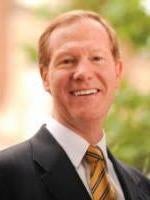UPDATE: On July 28, 2020 the Federal Reserve Board announced an extension through December 31 of its lending facilities that were scheduled to expire on or around September 30, which includes the Main Street Lending Program.
On June 15, 2020 the Federal Reserve expanded access for certain nonprofit organizations to its Main Street Lending Program (MSLP). The program is targeted toward small and medium-sized nonprofits (those with 15,000 or fewer employees or 2019 revenues of $5 billion or less) and recognizes the critical role that nonprofit organizations play in the economy, particularly during this time when many are facing heightened demand for their services.
This program is particularly attractive to borrowers because its five-year loans defer interest for the first year and principal payments for the first two years of the term of the loan. The remaining principal balance is payable 15 percent at the end of year three, another 15 percent at the end of year four and the remaining 70 percent balance due at the end of year five. Within this program, there are two separate types of loan facilities available to qualifying nonprofits. One pertains to entirely new loans (Nonprofit Organization New Loan Facility or NONLF). NONLF loans are available in a minimum loan size of $250,000 and a maximum of the lesser of (1) $35 million or (2) the borrower's average 2019 quarterly revenue. The second loan facility is an expansion of existing loans that have been originated before June 15, 2020 and have a remaining maturity of at least 18 months (Nonprofit Organization Expanded Loan Facility or NOELF). NOELF loans are offered in a minimum size of $10 million and a maximum of the lesser of (1) $300 million or (2) the borrower's average 2019 quarterly revenue. In either case, the loan may not be subordinated to any other debt of the borrower. Interest rates are set at LIBOR plus three percent, the same rate established for loans to business borrowers under the MSLP.
Eligibility for these loans is limited to organizations formed in the United States and recognized as tax exempt under IRC §501(c)(3) (i.e., charitable, educational, religious, scientific, literary or testing for public safety) or IRC §501(c)(19) organizations (i.e., veterans organizations). Additional borrower eligibility criteria include:
-
Must have been in continuous operation since January 1, 2015
-
Minimum of 10 employees
-
Endowments of less than $3 billion
-
Total non-donation revenues equal to or greater than 60 percent of expenses for the three-year period 2017-2019
-
2019 operating margin (ratio of adjusted EBIDA to unrestricted operating revenue) of at least two percent
-
Minimum of 60 days' current cash on hand
-
Ratio of liquid assets (cash and investments) to outstanding debt of greater than 55 percent
In addition, applicants must have significant operations and a majority of its employees in the United States. Certain certifications and covenants are also required.
Unlike Paycheck Protection Program loans, there is no loan forgiveness component to the MSLP. These are full recourse loans. However, the two programs have similar policy goals in that borrowers under the MSLP are required to exercise commercially reasonable efforts to maintain payroll and retain employees.





 />i
/>i
